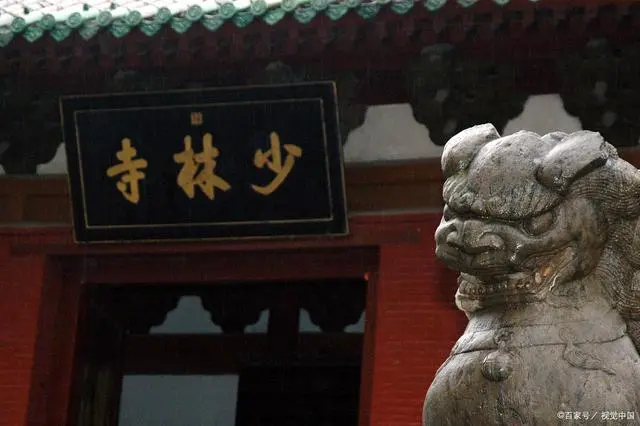
“Hongchen Talks About Zen” Series
Friends familiar with Buddhism know that today, Buddhism has long since declined in its birthplace, India. China has become the center of Buddhism, especially Mahayana Buddhism.
Mahayana Buddhism is also known as “Bodhisattva Buddhism,” which is quite different from the Hinayana Buddhism, often called “Arhat Buddhism,” which focuses more on personal cultivation. One of its core teachings is “self-enlightenment and enlightening others,” which, in simple terms, refers to the Bodhisattva’s vow to “save all sentient beings.”
Among the many Bodhisattvas, the most renowned are the Four Great Bodhisattvas: Manjushri, Samantabhadra, Avalokiteshvara (Guanyin), and Ksitigarbha. Today, Master Hongchen will introduce each of them to you.

Manjushri Bodhisattva – The First in Wisdom
Manjushri Bodhisattva’s full name is “Manjushri Master Bodhisattva,” also known as the “Prince of the Dharma.” He is considered the foremost among all great Bodhisattvas.
In fact, Manjushri Bodhisattva has already attained Buddhahood but chose to descend into our “Saha World” to assist our Buddha, Shakyamuni, in spreading the Dharma. The Buddha once told his disciples that Manjushri was the teacher of the Seven Buddhas and that he himself had learned the Dharma from Manjushri millions of eons ago.
As those familiar with the Dharma know, Buddhism values “wisdom” above all else. Without wisdom, all virtues are unattainable; no matter how much merit one accumulates, it is like “a fragrant elephant wearing jewelry.” The greatest virtue of Manjushri Bodhisattva is wisdom, and he is revered as the foremost in wisdom among the Four Great Bodhisattvas.
In many Buddhist scriptures, Manjushri has often represented the Buddha in teaching disciples, especially in the “Vimalakirti Sutra.” In this text, the layman Vimalakirti, who is known for being particularly challenging, confounds even the Buddha’s disciples like Shariputra and Maudgalyayana. It is ultimately Manjushri Bodhisattva who successfully addresses him.
Manjushri’s sacred site is Mount Wutai in Shanxi, his mount is a blue lion representing “fearless courage,” and his symbolic objects are the jade ruyi (scepter) and a sword.

Samantabhadra Bodhisattva – The First in Practice
Samantabhadra Bodhisattva, like Manjushri, sits flanking the Buddha, and the three of them are collectively known as the “Three Sages of the Avatamsaka Sutra.”
Samantabhadra Bodhisattva’s most significant virtue is his dedication to “practice” or his proactive approach to helping others. If Manjushri Bodhisattva, with his great wisdom, is the “mentor” for many believers, then Samantabhadra Bodhisattva can be seen as the “inspector” who supervises everyone’s practice, ensuring no one is lax.
Samantabhadra’s sacred site is Mount Emei in Sichuan, his mount is a six-tusked white elephant symbolizing “steadiness and reliability.”

Avalokiteshvara Bodhisattva (Guanyin) – The First in Compassion
valokiteshvara Bodhisattva, or Guanyin, is perhaps the most endearing and well-known of all Bodhisattvas in the hearts of many believers, even more so than Manjushri. This is largely due to her “female appearance.”
The Buddha once stated, “All forms are illusions.” Practitioners of Buddhism should not be overly attached to external appearances, but this requires a certain level of spiritual attainment. For many novice believers, Guanyin Bodhisattva, who is as approachable as a neighborhood elder sister or mother, is naturally the most appealing. Thus, Guanyin’s appearance gradually transformed from the “male form” seen in the Tang Dynasty to the “female form” commonly seen today to attract more followers, especially women, who generally endure more suffering than men.
The most notable virtue of Avalokiteshvara is “compassion” — to bring joy is mercy, and to alleviate suffering is compassion. “Wherever there is a plea, there is a response,” and “In the sea of suffering, she is always the boat that saves people.” Countless believers chant “Great Compassionate Avalokiteshvara Bodhisattva” when they face difficulties, and even the powerful Monkey King Sun Wukong is no exception.
Guanyin’s sacred site is Mount Putuo in Zhejiang, her mount is the “Golden-Haired Hou,” and her symbol is the Jade Purity Vase.

Ksitigarbha Bodhisattva – The First in Vows
Ksitigarbha Bodhisattva, also known as Ksitigarbha King Bodhisattva, resides in the hell realms and oversees the Ten Yama Kings and countless souls.
Unlike other Bodhisattvas who guide sentient beings in the human world, Ksitigarbha chose the dark and suffering hells and made a great vow: “Until the hells are empty, I vow not to become a Buddha; until all beings are saved, I vow to attain Bodhi.” For this reason, he is regarded as the first in vows.
In reality, sentient beings are in the cycle of six realms of samsara, endlessly reborn. Souls leave the hells only to return again; therefore, the hells will never truly be empty. Ksitigarbha Bodhisattva essentially gave up the possibility of attaining Buddhahood to forever serve sentient beings in the hells, demonstrating absolute great compassion.
The other three Bodhisattvas are similar in this regard. They have already attained Buddhahood in other worlds but returned out of compassion to save sentient beings from suffering.
Ksitigarbha’s sacred site is Mount Jiuhua in Anhui, and his mount is “Diting,” which is said to hear all sounds from heaven and earth.
Hongchen’s Commentary
These are the Four Great Bodhisattvas of Chinese Buddhism, the most revered and dignified beings aside from Shakyamuni Buddha. They are like teachers to all believers, deserving our utmost respect and reverence.
Gate, Gate, Paragate, Parasamgate, Bodhi Svaha.

